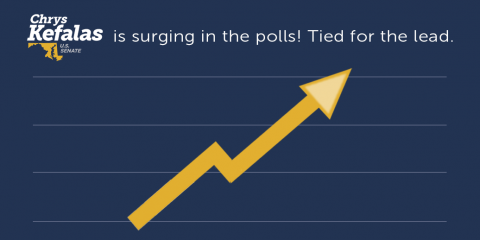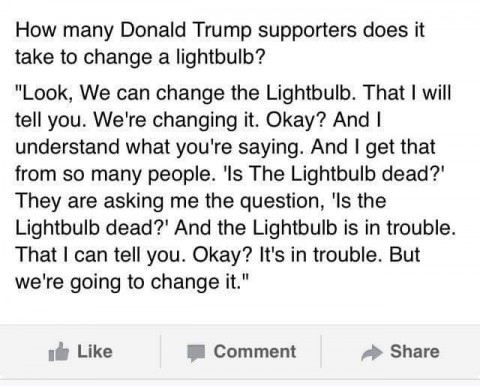Commentary by Marita Noon
The past couple of weeks have highlighted the folly of the energy policies favored by left-leaning advocacy agencies that, rather than allowing consumers and markets to choose, require government mandates and subsidies. Three major, but very different, solar entities – that would not exist without such political preference – are now facing demise. Even with the benefit of tax credits, low-interest loans, and cash grants that state and federal governments have bestowed on them, the solar industry is struggling.
We’ve seen Abengoa – which I’ve followed for years – file for bankruptcy.
Ivanpah, the world’s biggest solar power tower project in the California desert, is threatened with closure due to underperformance.
Then there is SunEdison, the biggest renewable energy developer in the world. It’s on the verge of bankruptcy as its stock price plunged from more than $30 to below $.50 – a more than 90 percent drop in the past year.
All of these recent failures magnify the solar industry’s black eye that first swelled up nearly five years ago with the Solyndra bankruptcy.
Worried about self-preservation, and acting in its own best interest – rather than that of consumers specifically, and America in general – industry groups have sprung up to defend the favored-status energy policies and attack anyone who disagrees with the incentive-payment business model. Two such groups are TASC and TUSK – both of which are founded and funded by solar panel powerhouses SolarCity and SunRun with involvement from smaller solar companies (SolarCity recently parted ways with TASC).
The Alliance for Solar Choice (TASC) is run by the lead lobbyists for the two big companies – both have obvious Democrat Party connections.
Bryan Miller is Senior Vice President, Public Policy & Power Markets at Sunrun (a position he took in January 2013) and is President and co-chair of TASC (May 2013). His LinkedIn page shows that he’s worked for the National Finance Committee for Obama for America and was Finance Coordinator/Field Organizer for Clinton-Gore ’96. He’s also served as s senior political appointee in the Obama Administration and ran an unsuccessful 2008 bid for election to Florida’s House of Representatives, District 83.
Co-chair John Stanton is Executive Vice President, Policy & Markets at SolarCity. In that role, he, according to the company website, “oversees SolarCity’s work with international, federal, state and local government organizations on a wide range of policy issues.” Previously, Stanton was Executive Vice President and General Counsel for the Solar Energy Industries Association (SEIA) – the national trade association for industries that support the development of solar power – with which he oversaw legal and government affairs for the association. There he played a pivotal role in the 8-year extension of the solar investment tax credit. He was also legislative counsel for the Environmental Protection Agency under the Clinton administration.
A news report about the founding of TASC states: “First and foremost, the group will work to protect net-energy metering (NEM) rules in the 43 states that have them.”
On March 25, the Wall Street Journal reported: “two dozen states are weighing changes to their incentives for rooftop solar…incentive payments have been the backbone of home solar firms’ business model.” In the past several months, Nevada and Hawaii have ended their NEM programs. TASC has responded with lawsuits. In Hawaii, TASC’s case has already been dismissed with a report stating: the judge’s “ruling in favor of the Defendants has eviscerated TASC’s claims.” Last year, Louisiana capped its “among the most generous in the country” solar tax credit. Arizona Public Service was the trailblazer in modifying generous solar policies when, in 2013, the Arizona Corporation Commission approved a fixed charge for solar customers.
As one of the first states to challenge the generous NEM policies, Arizona is still a battleground. That’s where TASC formed another group: TUSK – which stands for Tell Utilities Solar won’t be Killed. Lobbyist and former U.S. Congressman Barry Goldwater, Jr. was brought in to give a Republican face to the industry’s advocacy. TUSK even has an elephant, the Republican mascot, as part of its logo. The TUSK home page states: “Republicans want the freedom to make the best choice and the competition to drive down rates” – true, but a core value of the Republican Party is allowing the free markets to work rather than governments picking winners and losers.
While registered in Arizona, TUSK has recently been active in other states – including Nevada, Oklahoma, and Michigan.
The reoccurring theme in the TASC/TUSK campaign is to connect the word “kill” with “solar” – though the NEM modification efforts don’t intend to kill solar. Instead, they aim to adjust the “incentive payments” to make them more equitable. However, without the favors, as was seen in Nevada, rooftop solar isn’t economical on its own. Companies refuse to play when the game is not stacked in their favor.
TASC and TUSK are just two of the ways the rooftop solar industry – also known as a “coalition of rent seekers and welfare queens,” as Louisiana’s largest conservative blog, The Hayride, called them in the midst of that state’s solar wars – is trying to protect its preferential policies. It has other tricks in its playbook.
In addition to the specific industry groups like TASC, TUSK and SEIA, third party organizations like the Energy and Policy Institute (EPI) are engaged to intimidate public officials and academics. EPI, run by Gabe Elsner, is considered a dark money group with no legal existence. It can be assumed to be an extension of what is known as the Checks & Balances Project (CB&P) – which was founded to investigate organizations and policymakers that do not support government programs and subsidies for renewable energy. CB&P has received funding from SolarCity. Elsner joined CB&P in 2011 – where he served as Director – and then, two years later, left to found EPI – which C&BP calls: “a pro-clean energy website.” EPI produces material to attack established energy interests and discredit anyone who doesn’t support rooftop solar subsidies. I have been a target of Elsner’s efforts.
Then there is the Solar Foundation – closely allied with SEIA and government solar advocacy programs – which publishes a yearly report on solar employment trends across the country. Solar employers self-report the jobs numbers via phone/email surveys and the numbers are, then, extrapolated to estimate industry jobs nationwide. Though the reports achieve questionable results, threats of job loss have proven to be an effective way to pressure state and federal lawmakers to continue the industry’s favorable policies – such as NEM.
Together, these groups have a coordinated campaign to produce public opinion polling that is used to convince politicians of NEM’s public support. Such cases can be found in Maine, Nevada, New Hampshire, Colorado, and Kansas. They gather signatures from solar advocates and use them to influence legislators and commissioners. They engage in regulatory and rate proceedings – often creating, as I’ve experienced, an overwhelming presence with mob-like support from tee-shirt-wearing, sign-waving advocates. They run ads calling attempts to modify solar’s generous NEM policies a “tax” on solar and, as previously mentioned, attack utilities for trying to “kill solar.” If this combined campaign isn’t fruitful, and NEM policies are changed, lawsuits, such as those in Hawaii and Nevada, are filed.
This policy protection process may seem no different from those engaged by any industry – as most have trade associations and advocacy groups that promote their cause. Remember “Beef, it’s what’s for dinner” and “Pork, the other white meat”? Few are truly independent and self-preservation is a natural instinct.
Yes, even the fossil fuel industry has, for example, the American Petroleum Institute, the Independent Petroleum Association of America, the National Mining Association, and the American Coalition for Clean Coal Electricity. And there are advocacy groups who support various limited-government, free-market positions, as Miller recently accused.
The difference is that fossil fuels provide, and have been providing, America with efficient, effective, and economical energy. Its abundance has lowered costs for consumers and increased America’s energy security. Advocates are not fighting for special favors that allow this natural resource to survive, but are rather attempting to push back on new rules and regulations aimed at driving it out of business.
By comparison, the solar advocacy efforts are, as acknowledged by TASC: “First and foremost, the group will work to protect net-energy metering (NEM) rules,” as without them – and the other politically correct policies – rooftop solar energy doesn’t make economic sense. Because rooftop solar power isn’t efficient or effective, its major selling point is supposed savings that are achieved for a few, while costing all tax- and rate-payers.
With the potential of a change in political winds – remember the solar supporters all seem to be left-leaning, big government believers who want higher energy prices – the campaign for America’s energy future is embedded in the presidential election.
Will big government pick the winners and losers, or will free markets allow the survival of the best energy sources for individual circumstances?
The author of Energy Freedom, Marita Noon serves as the executive director for Energy Makes America Great Inc., and the companion educational organization, the Citizens’ Alliance for Responsible Energy (CARE). She hosts a weekly radio program: America’s Voice for Energy—which expands on the content of her weekly column. Follow her @EnergyRabbit.




